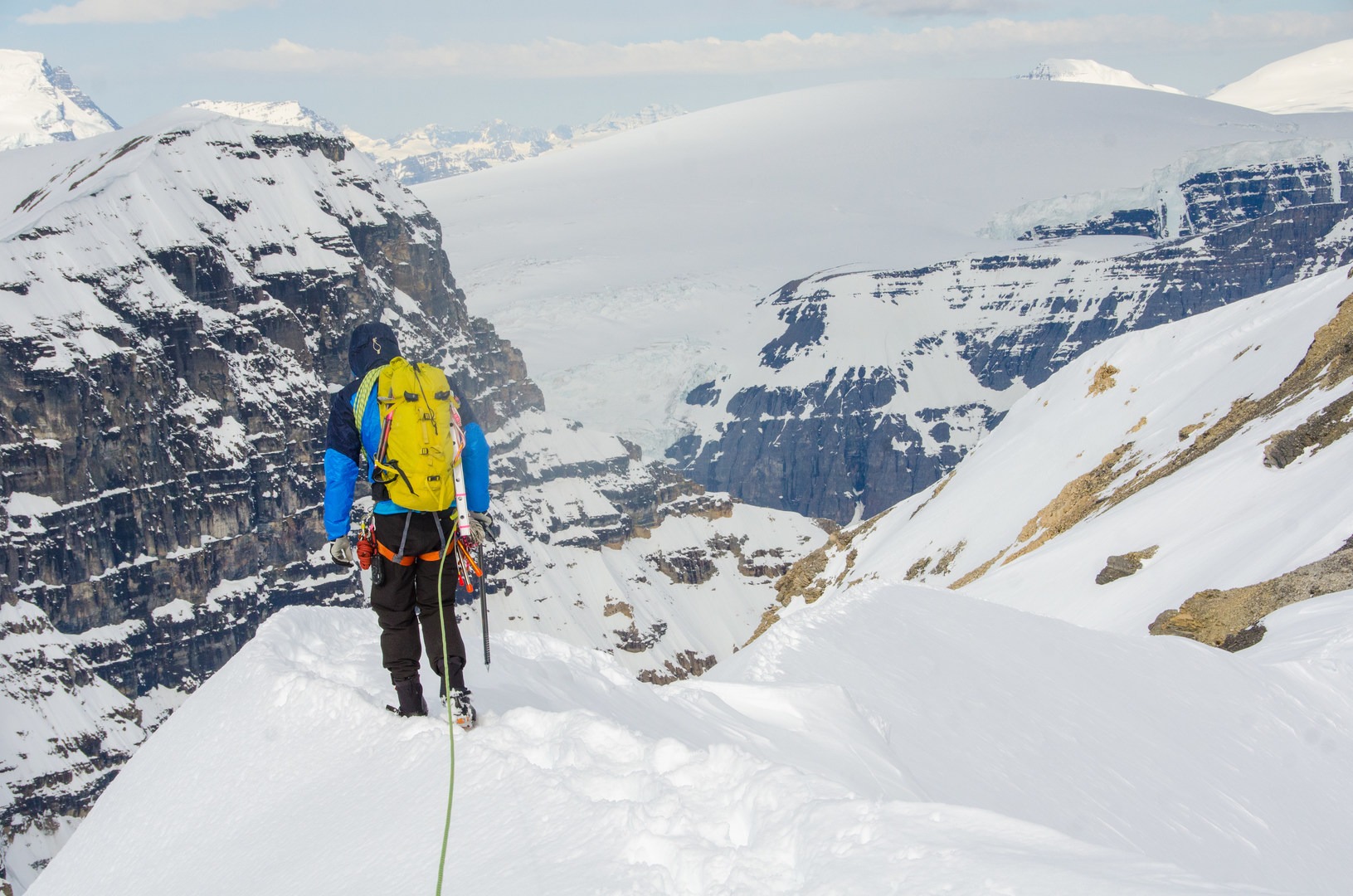You are here
Silverhorn is a classic mountaineering objective in the Rockies. In good conditions it's a straightforward march to the top along the prominent glacial ridge above the broad exposed seracs. In poor conditions, however, it can be very risky. From the summit you'll get a spectacular view across the Columbia Icefield.
This route should not be attempted by novices. If you lack the necessary skills, seek out one of the many guiding outfits in the area. Athabasca is very popular, and it shouldn't be too hard to find a spot on a trip. Without a guide, formal education in crevasse rescue is essential. Avalanches are also a serious risk. Consider an Avalanche Safety Training 1 course essential. Experience lead ice climbing WI2 and 3 in winter is highly recommended, especially later in the season.
It's highly recommended to have a good look at the route the night before you head up. The patio at the Columbia Icefield Centre offers terrific views to pick out the route.
Park just to the left of the Icefield Parkway and follow the road to the explorer staging ground. Directly to the east is river. There are trails on either side of the river. Take the southern side, and follow the trail up the moraine. Trend east southeast. The moraine will take you to the edge of the glacier. If you've timed things right, the sky should be turning gray by the time you've roped up, prepped your crevasse rescue equipment, and are ready to go.
Head across the icefield and toward the begining of the ridge. There are a number of hazards here that are obvious to mountaineers, so it bears repeating that adequate experience or guide accompaniment is a must. The Silverhorn is the broad glacial ridge in the middle of the Mount Athbasca ridge. To the right of the Silverhorn is the North Glacier route that zigs beneath the large serac and above the bergschrund until it reaches the ridge proper and zags back. This route is a little easier, and it offers a good chance to back out if the Silverhorn looks too icy for your tastes.
The climbing begins as you approach the bergshrund. Later in the season this can get very tricky. Once past the bergschrund the terrain is pretty low angle, maxing out at about 40 degrees. Still, if there is no snow it can feel a little spooky. If you are new to ice climbing you may want to use an ice screw or two and even an extra ice tool. Once you achieve the top of the Silverhorn there is a simple walk across a ridge to gain the summit. The ridge is nearly a meter wide with snow, so it isn't too scary.
The best way to descend is via the AA Col route. Rockfall gets pretty serious later in the day, so be warned. There should be a bit of a path leading down, but failing that, choose the lowest angled gulley to work your way down. Keep the rope on because you will need it to cross the glacier at the bottom. Once you are on the glacier it is a gentle walk downhill where you'll meet the AA col trail that takes you through the rockband and back down to the trailhead.
For a detailed description of this climb, refer to The 11,000ers of the Canadian Rockies by Bill Corbett.
Pack List
- Five Essentials
- The Plan: Topo map, compass, and guide information. Using Google Earth to spot out the route is good, too. Also, if you're camping, taking a photo and checking things out in advance is a good idea
- Sustenance: A hydration bladder, pocket snacks, and the rock island on the Matier-Joffre Col makes for a good lunch spot.
- Weather protection: Sunglasses, hat, buff, sunscreen, warm layer (ideally down, synthetic or fleece), hard shell and dry bag for valuables.
- Extras: Trekking Poles, gaiters, extra socks.
- Sh*t hits the fan: A tarp or bivy bag, reflective blanket, extra food, headlamp.
Climbing Gear
- Crevasse Rescue Kit
- Ice ax and crampons
- Footwear: Crampon compatible mountaineering boots are essential for this trip. There are steeper snow sections, and hiking boots with strap crampons lack the necessary rigidity and security to be safe.
- Standard Climbing Gear: Helmet, harness, belay device, personal anchor system, 30-meter glacier rope.
Camping Gear
- Tent, sleeping bag, sleeping mat
- Stove, utensils, mess kit.
- Toiletries, toilet paper, and there are still no facilities at Motel 66, so solid waste bags are essential.
Logistics + Planning
Current Weather: Powered by Dark Sky





























Comments
Sign In and share them.